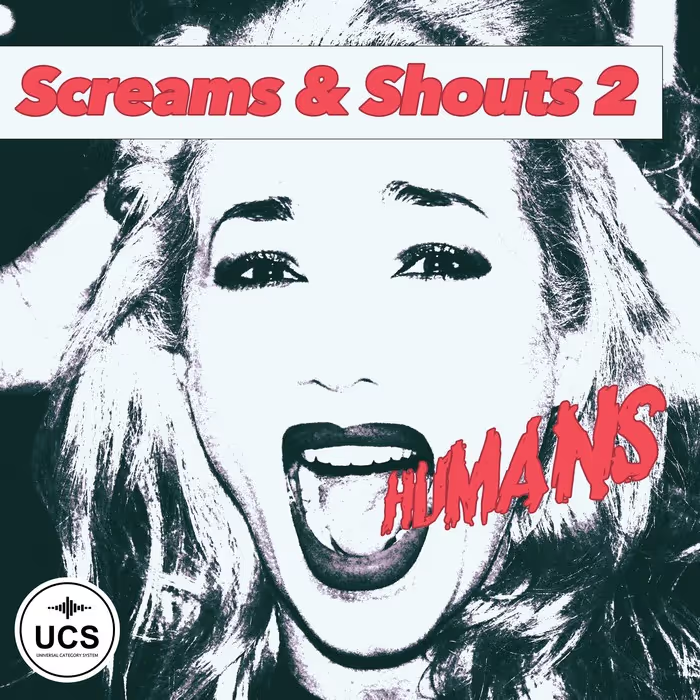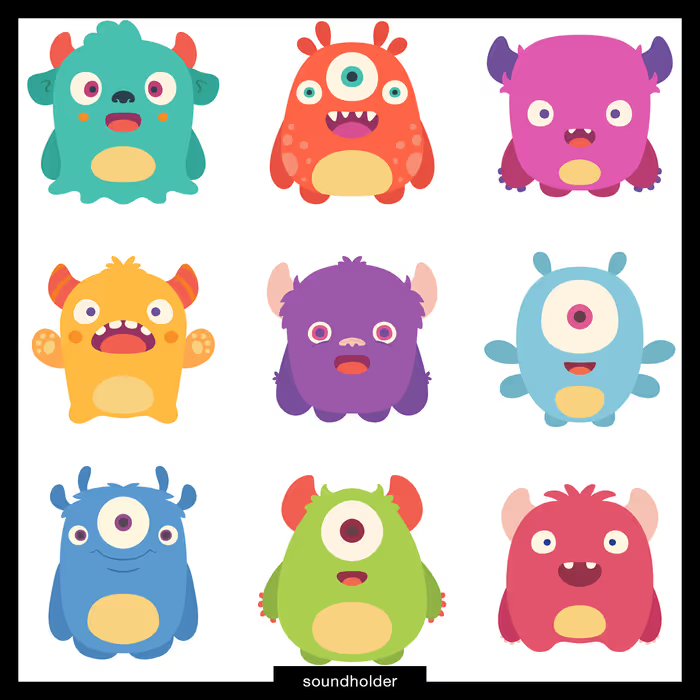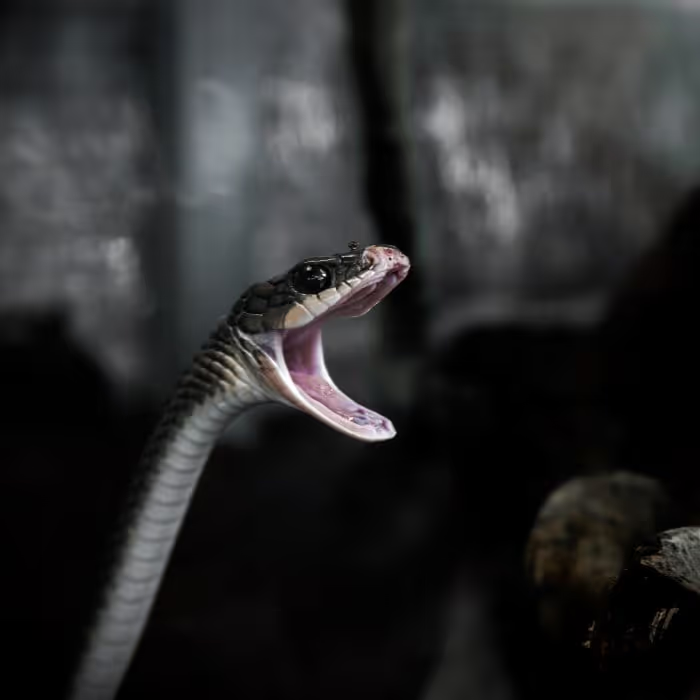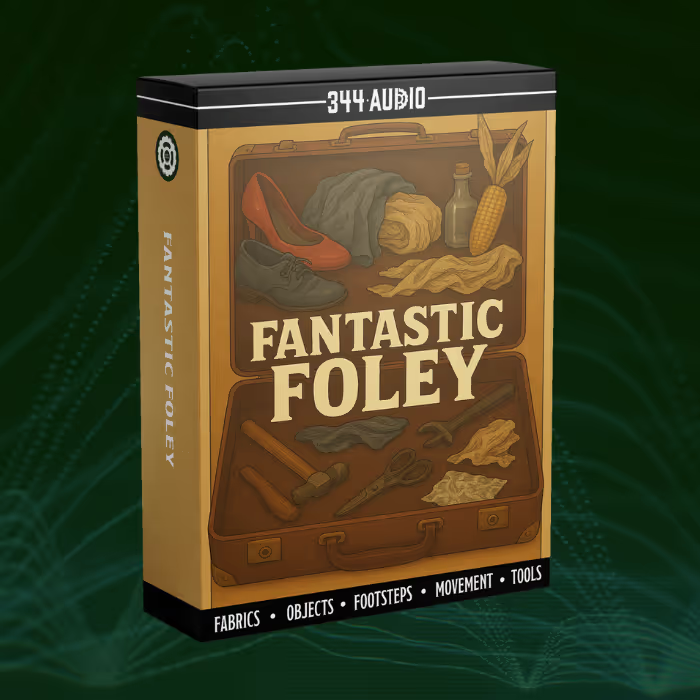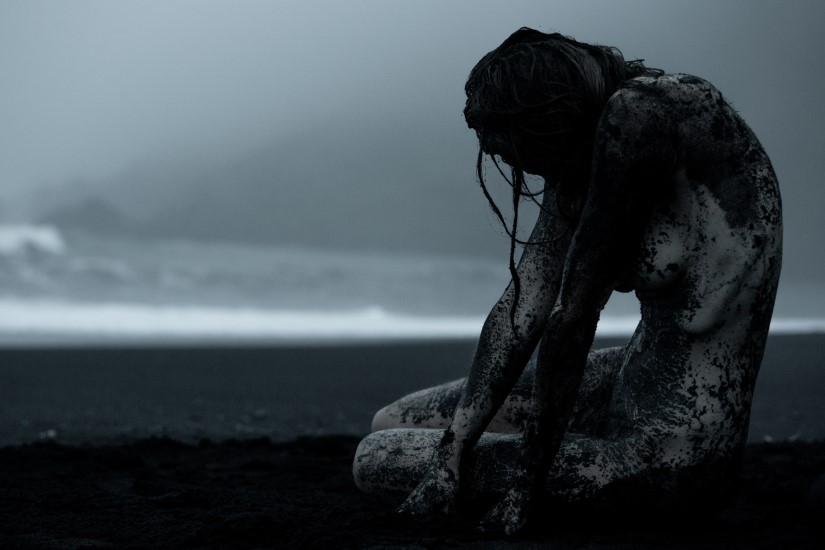
Netflix’s Icelandic sci-fi series Katla takes a natural approach to the supernatural. Set in the small town of Vik, Iceland, where a near-by subglacial volcano named Katla has been erupting for a whole year, the remaining habitants begin to experience strange reappearances of missing people, deceased people, and even duplicates of those still living, all caked in volcanic ash and goo.
For Icelandic sound designer/sound supervisor/dialogue editor/re-recording mixer Huldar Freyr Arnarson at Soundpark Post in Reykjavík, Iceland, making the series sound natural — making the audience believe what they’re seeing is real — was the trickiest part. The key to believability, Arnarson says, is perspective. “When you don’t have the right perspective for a sound, then it’s difficult to make it work. There are a lot of effects that don’t have the right perspective. They sound too close. And they have too many transients. It’s difficult to fit it into the mix. When you have the right sound and the right perspective, then it’s easy.”

Near the opening of Ep. 1 “From Under the Glacier,” Thor (Ingvar Sigurðsson) checks in on his daughter Grima (Guðrún Eyfjörð). He sits down at the piano and begins to play. It’s out of tune, so he opens the top and peeks inside. “Everything was added in post: the chair creak, the piano lid creak, the footsteps… nothing there is original,” says Arnarson. “Finding the right sounds — so that everything glues together and you buy it — was important. It’s hard to find the right creaky sound that fits into the environment. Doors especially can be tricky to make them sound right, with the right perspective. And wooden floors, too, are tough because you want to hear how they sound in the room. When you record those sounds with the right perspective, then you get the right vibration from the walls and whole house.”
“When you have the right sound and the right perspective, then it’s easy.”
In his pursuit to capture the right perspective, Arnarson started recording sounds during production, particularly the vehicles which were special-made and modified in Iceland. He captured pass-bys, parking, driving in reverse, interiors, and doors opening and closing. “You won’t find these cars in any library. So as they were filming last summer, I recorded six vehicles at a gravel airfield nearby. I recorded around 1,300 sound files of just cars because I wasn’t sure how the cars would be shot for the series. I had to cover many different positions and perspectives,” he says.
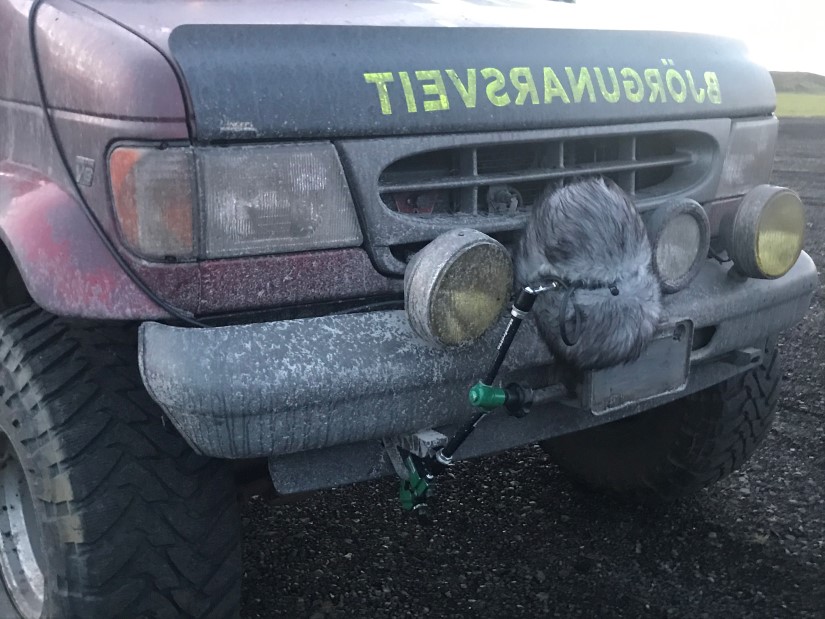
Arnarson used a multi-miking approach for each vehicle. He positioned a small DPA mic near the rear to capture both exhaust and road noise. Mounted to the front was a DPA 5100 surround microphone with one channel capturing the engine and one capturing the road. “I used this mic is because it can withstand wind noise very well. I didn’t get any wind rumble,” says Arnarson. He set up an ambisonic mic to record the interior, and for exterior, he placed a spot mic 15 to 20 meters behind the car, and an M/S setup two meters away on the side of the car. A Sennheiser MKH 40 was positioned close to the front of the car. This was the base setup for car start, idle, drive away, and parking in the distance. He also had close-up mics on the side and front of the car as it was parking. Arnarson then reversed the car so the distant mics could capture the front and rear of the car in action. “This way I have options for perspective,” he says. “What’s really cool about recording with distant miking is you get all the rumble from the earth, all the sound from the tires and everything. As you see in this series, there are a lot of wide shots of cars driving by. So in the takes, I recorded the cars driving at various speeds past the close spot mic and M/S setup 50 meters away.”
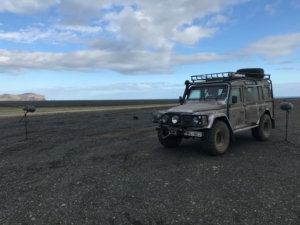
Recording the cars from a distance meant that environmental sounds were a huge concern. Since Katla is set in winter, there couldn’t be any bird sounds on the tracks but Arnarson was only able to record the cars during summer. “We recorded mostly around midnight, when we had three or four hours without birds,” he says. “Sometimes it was raining; sometimes it was too windy. And if it was too windy, then I recorded wind sounds inside the car and around the cars. Sometimes if the wind was coming from the ocean, you could hear the surf. When we heard the ocean too much, then we just recorded the ocean. And those recordings were useful later for designing the rumble of the volcano in the series. When you plan to record something and it’s not going as you hoped, then it’s important to always record something else while waiting for the right opportunity,” he says.

“When you plan to record something and it’s not going as you hoped, then it’s important to always record something else while waiting for the right opportunity.”
To make the ocean sounds work as volcanic rumbling, Arnarson processed them with modular synthesizers, finding LFO to be especially useful for adding movement to the sound. “I got that idea while recording the ocean from a really long distance. It just sounded a bit like a volcano,” he says. Mixing the ocean rumbling with a general deep rumble sound and adding a few vibration elements created the feeling of the earth moving and stopping.
Additionally, Arnarson spent a day on the studio set, recording all the props such as the phones at the farm. He even recorded rumble by shaking the furniture, just in case they wanted to have the house shaking, earthquake-style, in the show. “But we never used it. Still, it’s good to use the time and location to record as much as you can because you never know. I use most of the sounds that I record — if not now then on a later project,” he says. “It helps a lot to record the props. It’s so easy to just glue it in afterwards in post-production. Most of the time, it just flows better into the production sound.”
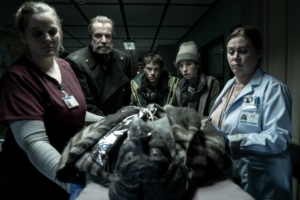
He captured sounds in the hospital, like the hospital bed, ultrasound machine, and other medical equipment, as well as some footsteps. And he recorded the scientific equipment at the ice camp base “because then you have it instead of searching for it in a library,” says Arnarson. “Whatever I saw, I just recorded it. I recorded as much as I could in a 10-hour day, which resulted in around 2,300 sound files for this project.”
He also used sounds he captured over the years from different locations, such as his parent’s living room in Sweden. “They had old wooden floors and I recorded them creaking; I recorded the doors and room tone. You can hear the birds outside and in the garden — all of those sounds ended up in Katla for the locations in Sweden,” he says. When recording doors, Arnarson always uses two microphones: one half a meter from the door and one three meters away. “This way you get the sound of the whole door and all the walls and everything. It’s more natural.”
“Whatever I saw, I just recorded it. I recorded as much as I could in a 10-hour day, which resulted in around 2,300 sound files for this project.”
For the raven in the series, Arnarson used raven sounds he captured for previous projects, as well as new recordings of a trained raven that had clipped wings. “When I went to record the raven, it was difficult in that environment and I could just catch more close up sounds of him,” he says.
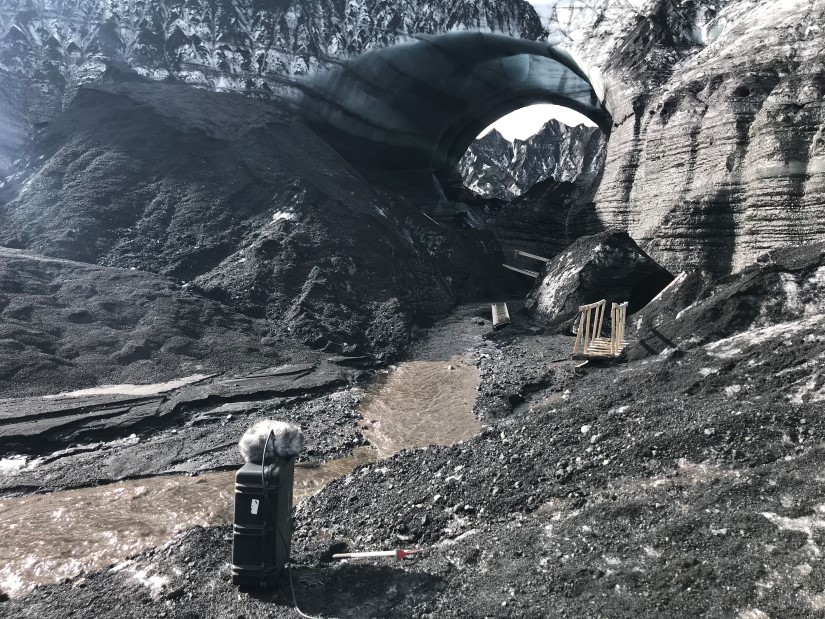
Arnarson recorded rivers, streams, and waves on a beach. “I also recorded the amphibious boat in the series. Again, it was important to do this at night when there were no birds because we didn’t want to hear any living birds except the ravens or some seagulls,” he says.

For Arnarson, finding the sound of the series was a journey. Director Baltasar Kormákur (with whom Arnarson has collaborated on other projects such as The Oath that earned Arnarson a 2017 Edda Award for ‘Best Sound’) gave Arnarson the freedom to edit and mix the show to his tastes before commenting. “Of course, there are always notes and changes here and there, just minor things. There weren’t any scenes that needed to be done from scratch,” Arnarson says. “But you have to take this journey, try out things and see how they sound. It’s not an exact process. Maybe something you edited in doesn’t work with the score. You just have to explore the possibilities for how a scene could sound.”
“It’s a journey. Don’t be afraid that you won’t find the right solution. You will find it just by trying various things.”
And Arnarson’s sonic journey started in production. He says, “You can’t just sit around and think about how you want the show to sound. You have to just start. Everything starts when you start doing it. That’s when the doors open. It’s difficult to just think about how you’re going to tackle it. You just have to start with some sound and then explore the possibilities for things that aren’t working. It’s a journey. Don’t be afraid that you won’t find the right solution. You will find it just by trying various things.”
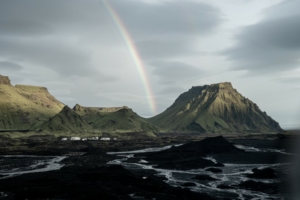
“I’m thankful to the production team for understanding that I wanted to start right away, during shooting, to have access to the studio to record the props and to record the cars. Mostly everything I wanted to capture they helped me out with it,” concludes Arnarson.
A big thanks to Huldar Freyr Arnarson for giving us a behind-the-scenes look at the sound of Katla and to Jennifer Walden for the interview!


